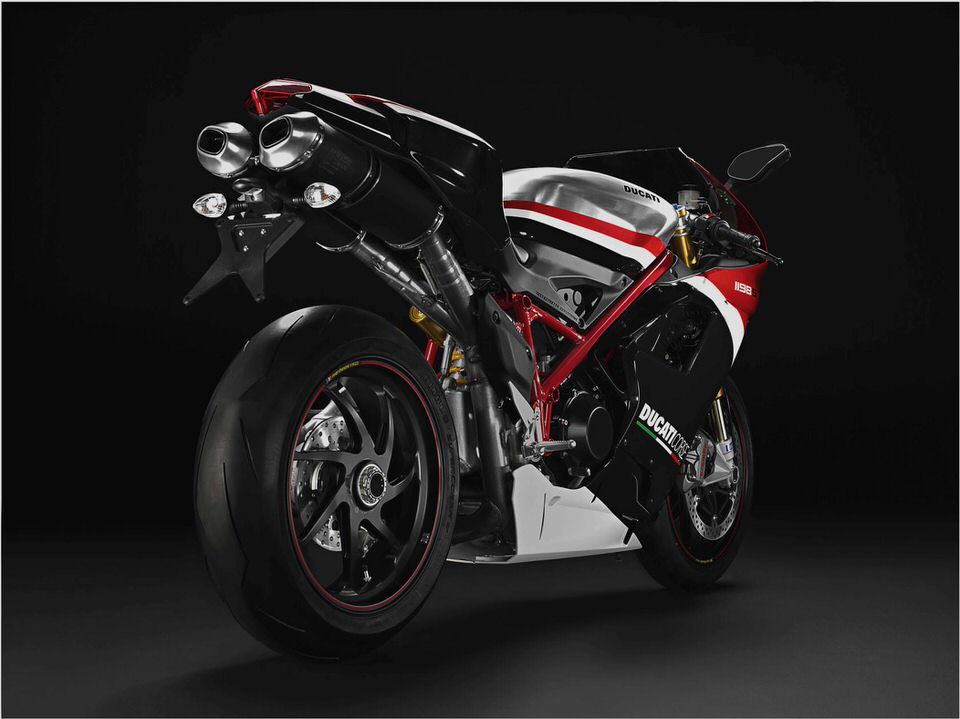
2010 Ducati 1198S Comparison Track
Ducati 1198S Corse Special Edition
$25,000
Curb Weight: 441 lbs.
Horsepower: 157.90 hp @ 9600 rpm
Torque: 90.14 lb-ft @ 8300 rpm
Quarter Mile: 10.01 @ 145.2 mph
Racetrack Top Speed: 152.30 mph
Superpole Best Time: 1:56.57
Overall Ranking: 3rd Place
We need to start out by explaining a few things about the Ducati used in this test. For 2010 our Italian pals opted to bring the 1198S Corse Special Edition. That means it came with a street-legal Termignoni exhaust and Ohlins suspension front and rear and a whopping $25,000 sticker price.
That’s double the cost of nearly all the Japanese, with only the $21,000 KTM even coming close. So why did Ducati opt to bring this trick machine? They intended to compete with the ultra-trick new BMW and knew that despite losing points due to price this was the machine to do it with.
They were right.
With the aid of some set-up numbers from their World Superbike team, right out of the box the 1198S felt planted, solid and very quick. And while the torque-rich L-Twin engine is no doubt an awesome powerplant, it was the chassis that really stood out as a class leader.
With a history of racing on a Ducati recently, Sorensen was right on pace from the first lap out of the pits on the Duc. “The Ohlins fork is the fork I am most familiar working with. As a rider you can feel small changes made,” Chuckie explains. “The rigidity of this front end can be felt entering the corners with excellent feedback to the rider. This was the best front end of the bunch for me.”
One of the best looking bikes currently made, it’s impossible not to stare at the Ducati 1198S Corse. The V-Twin class-leading 90.14 lb-ft of torque at 8300 rpm.
Hensley was similarly impressed with the Ducati’s mid-corner prowess. “That thing is like it’s on a rail, thank you very much,” says the actor. “Although, that beast of an engine did make me hesitant to roll on (the throttle) mid-corner. That’s not a criticism, by the way, just something that I needed to give respect too.”
Some riders did struggle with the Ducati’s chassis. Its aggressive setup was not to the liking of all. “The Ohlins fork provided consistent feel and was reactive to changes,” says Earnest, though adding that “it was hard for me to trust it 100%. No feedback from the front end gave me no confidence to push hard.”
Looking at the Kinelogix data numbers, the fast, long and demanding Turn 2 was the where the Ducati excelled. With a max corner speed of 72.5 mph and max lean of 57.5 degrees, the 1198S no doubt ruled this area of the track. At the same time, it was at the bottom of the pile when it came to grip numbers in both Turn 2 and the final corner. How could this be you ask?
Because the Ducati was sliding a good deal in those corners, something that the chassis allowed us to do during Superpole with complete confidence.
As for the braking department the Brembo monoblocs on the Ducati once again proved absolutely amazing. Initial bite was off-the-charts, on par with that of the BMW, while a progressive feel and ample feedback allowed us to be aggressive on the brakes but controlled at the same time. When it came to brake testing at El Toro is was no surprise that it was second only to the advanced ABS-equipped Beemer, recording an awesome stopping distance of 121 feet.
Corner-exit acceleration from the 1198S was very strong, which wasn’t surprising considering its class-leading torque numbers.
“By no means am I that great on the brakes,” says Hutch. “But the Ducati makes me feel like a superhero when those binders are whining and scrubbing off speed. I know it doesn’t have ABS but I felt the most confidence in the Ducati brakes.”
While its chassis, slim size and mondo brakes were the main areas noted when riding the Ducati, the V-Twin engine harnessed in that trellis frame is no slouch either. Making a max horsepower of 157.90 hp at the rear wheel and topping the Torque numbers with 90.14 lb-ft, the Ducati comes off the corners with force. Gearing was a slight issue, though not as far off as the Kawasaki, yet it still required a lot of footwork.
But when things were right, the Duc was seamless.
“The Ducati engine has become very refined over the years in keeping up with the Inline Fours,” adds Sorensen. “While its power has been deceptively fast, the top end on this bike is now felt with a similar rush as some of the Fours. Using the low-end torque of this engine is still key to a quick lap time but considering it is 1200cc the over-rev on this bike is amazing. Though it’s a bit funny only revving this bike to 11K where on most of the other bikes you going up to or past 14K these days.”
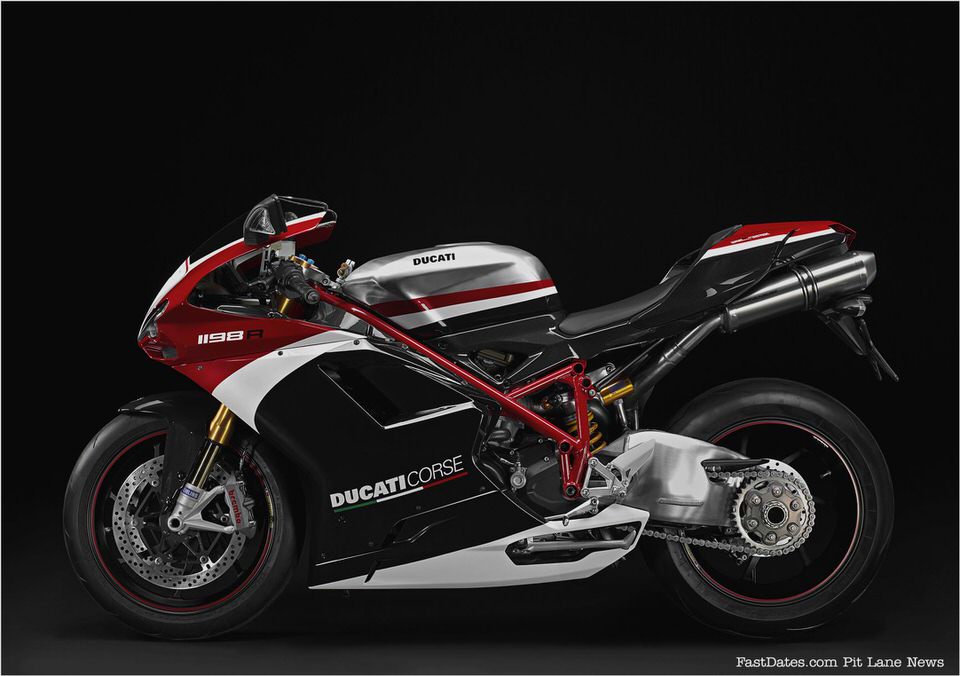
“The 1198 had great torque and felt fast but I didn’t like how much I had to shift to keep it in the power,” Neuer remarks. “But there’s no doubt the bike has got some balls.”
Earnest’s comments reflected those of Neuer: “It pulls like a tractor off corners good tractable power but a fair amount of shifting is needed.”
The Ducati’s solid chassis and Ohlin suspension equated to one of the best handling bikes in the shootout. This is shown in the data chart with the highest corner speed in Turn 2 as well as the biggest max lean numbers.
A glance at the data shows that acceleration numbers exiting the final corner and Turn 6 vary quite a bit. At 0.76g coming onto the front straight the Ducati is tied with the Kawasaki for second best, while the 0.69g it pulled exiting Turn 6 puts it right in the middle of the field. Much of this comes down to gearing and how you must ride the Ducati to go fast.
Quick lap times were had by carrying higher corner speed through the fast Turn 6 while a gear higher than the competition, thus the sheer acceleration numbers weren’t at the top like they were exiting the slower final corner. This method helped the Duc though, as it posted the second quickest lap times of the test this year under my control with a 1:56.57. This was substantially better than the 1:58.12 it did in last year’s shootout, much of the improvement coming down to a far better base set-up as Ducati came prepared.
Even with its improved base settings the Ducati did burn through rear tires the quickest of any bike in the test by a good margin. That leads us to believe that there was more to be had with the ultra-trick machine as short tire life is a telltale sign of something that could still be off in the suspension department.
“The Ducati tore up the tires the worst and this might have been a set-up issue?” Sorensen wonders. “When the tire was new this bike was planted and confident exiting corners, but when the tire was used it snaked a bit leaving corners; but realize that a 1200cc, 150 hp V-Twin would be hard to tame no matter the settings.”
The 1198S also surprised us at El Toro, posting respectable quarter-mile numbers. No doubt with much more possible, the Duc is by far the hardest bike to launch. The jerky clutch prevented us from getting off the line at a quick manner, while the torquey engine and ripping power propels the bike through the lights for a best run of 10.01 sec. Not the fastest of the bunch but it did post the second-quickest trap speed at 145.2 mph.
That shows that if it was possible to launch the Ducati at the same level of the Suzuki for example, that it could have potentially recorded a faster ET.
The cost to play may be high with the Ducati but the reward if you can afford it is a front-running and amazingly visceral machine.
The long throw of the shifter and the amount of off-throttle needed to engage the next transmission cog takes more effort than the other bikes and those extra milliseconds might have kept it out of the nines and was an issue on the track for a few riders.
“While Ducati has improved the transmission on the bike over the years, compared to its rivals, the bike has more throw and a notchier feel,” Sorensen remarks. “I wouldn’t complain personally but when compared to the others it is not as slick and takes a good deal more effort.”
All told the Ducati 1198S Corse Special Edition faired far better this year than the base 1198 did in 2009. The added power, reduced weight and Ohlins suspension did a lot to help propel the Duc up the order. But don’t forget that $25,000 price tag. You could have two CBR1000RRs for the same price. So while it’s a top-three motorcycle, you must also have deep pockets to afford this Italian beauty.
But if you do, we can guarantee you won’t be disappointed.
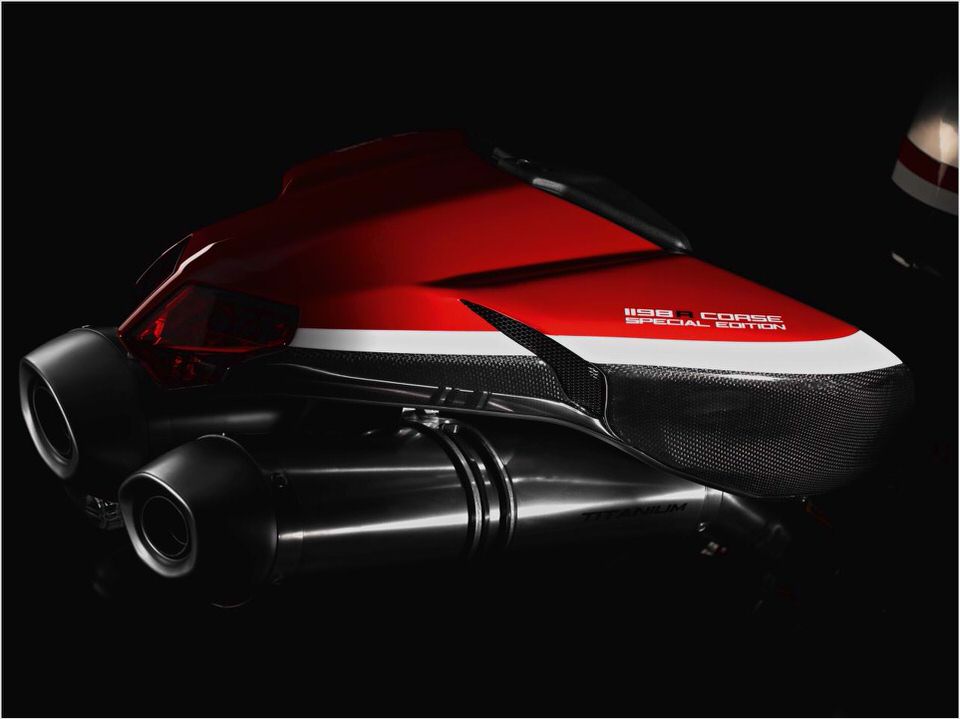
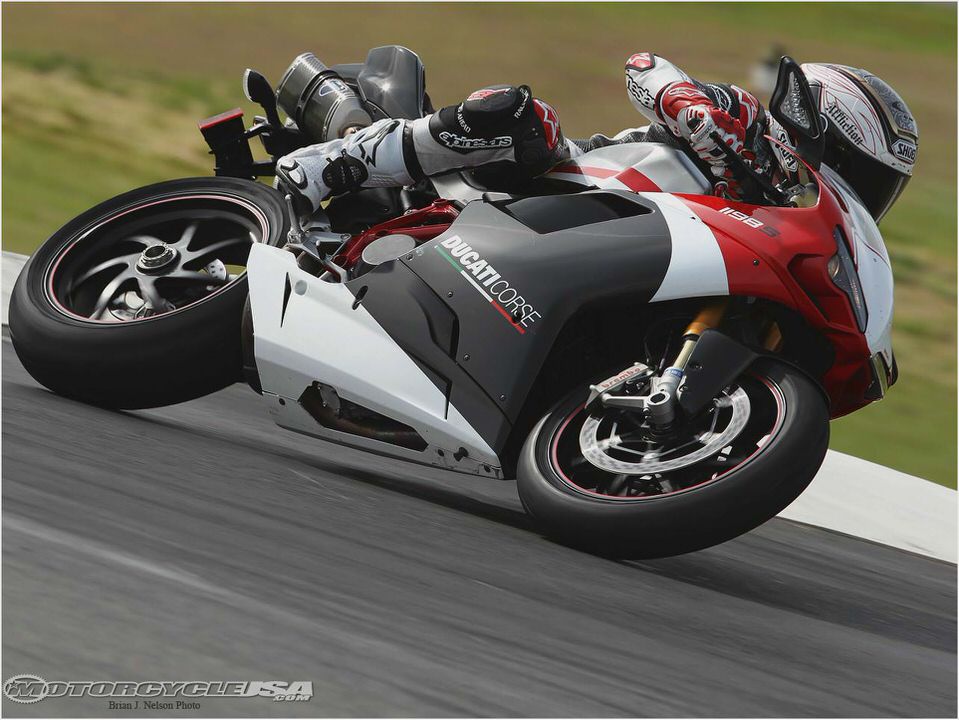
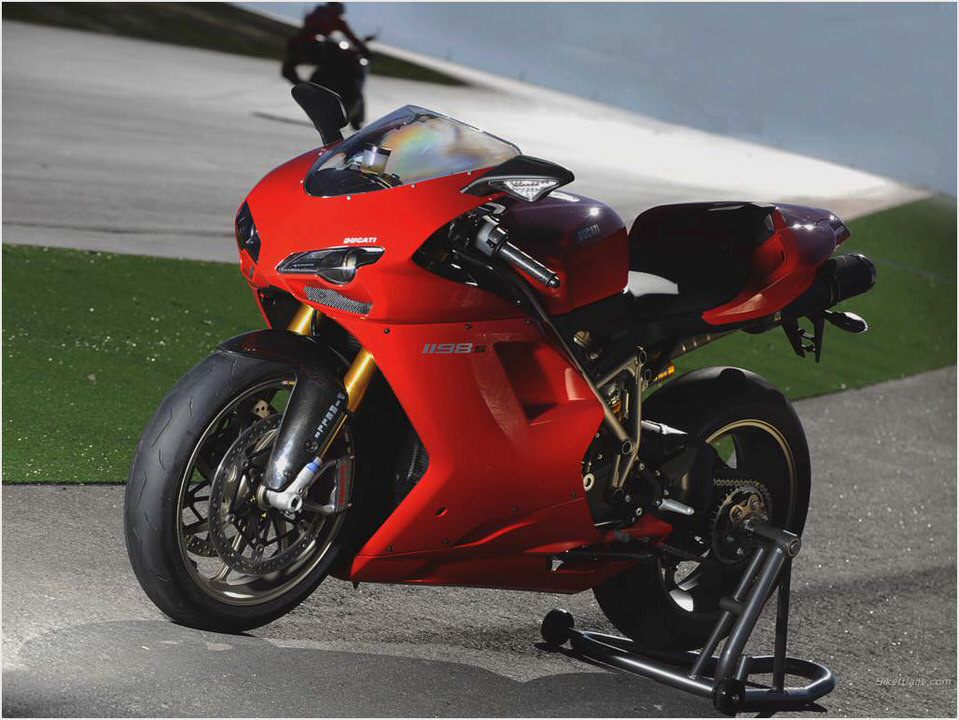
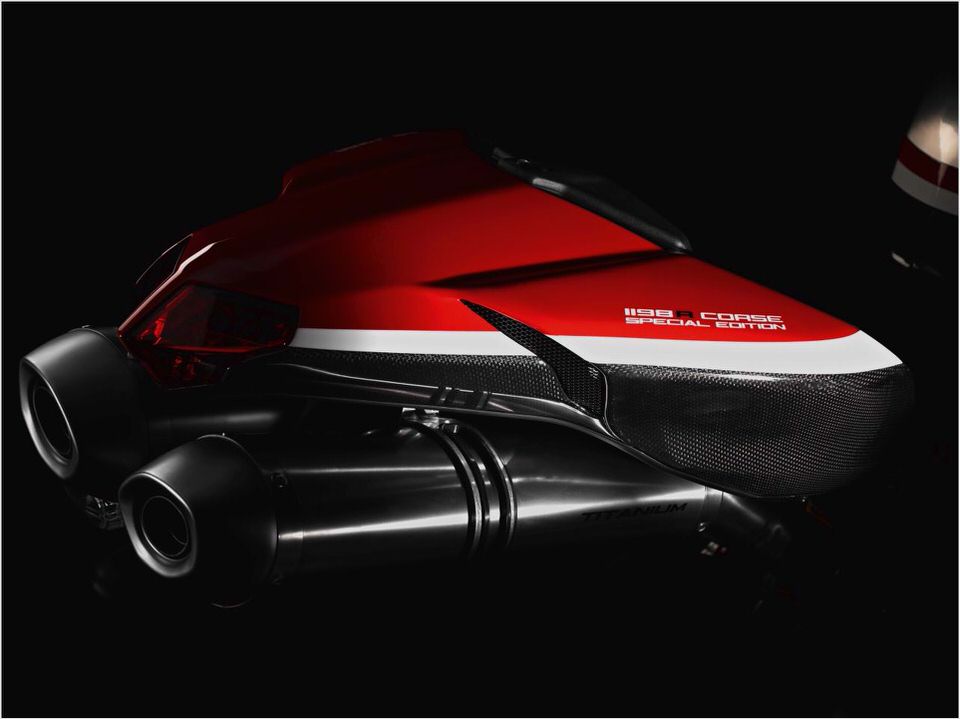
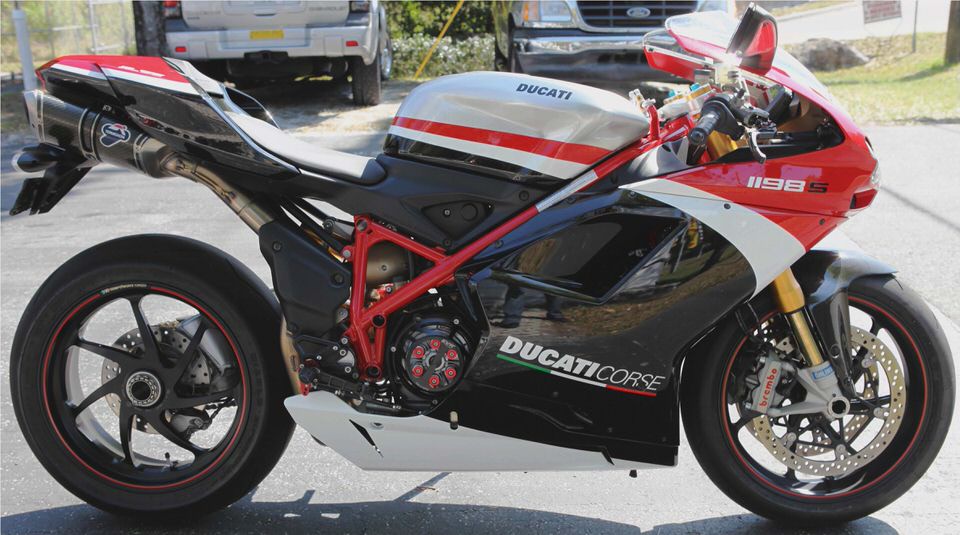
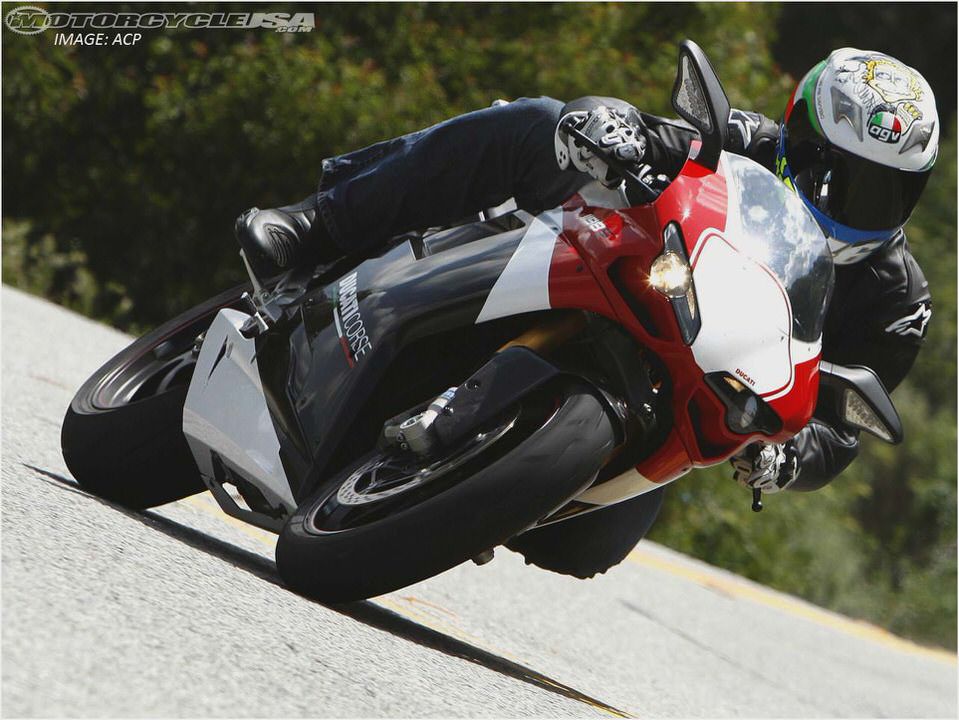
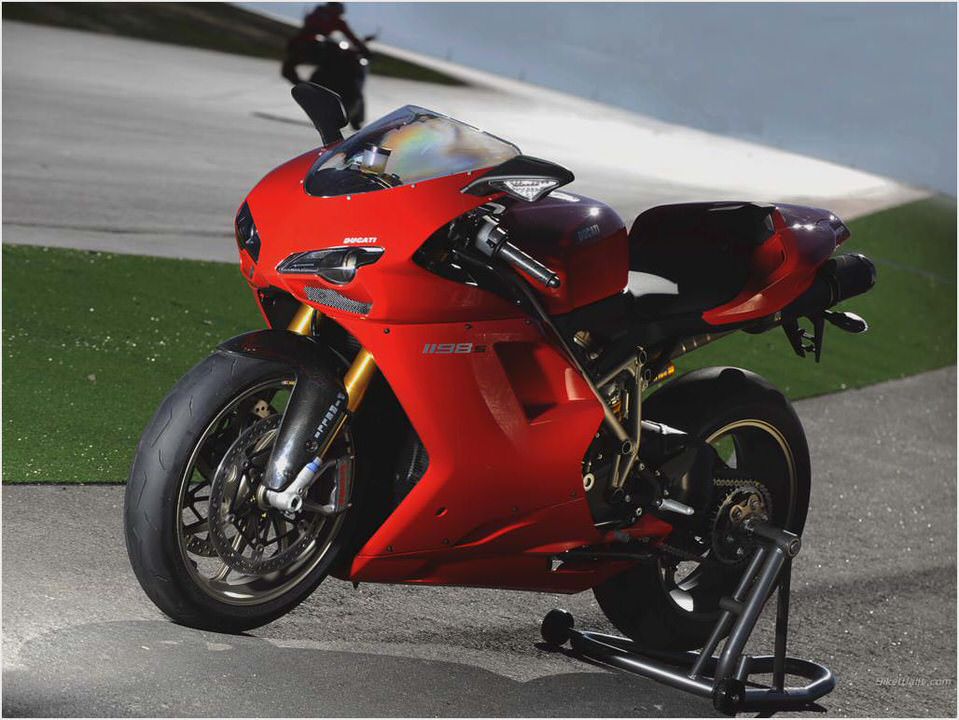
- A&R Rubbies: The Best Motorcycle Concepts of 2009
- Audi Motorrad Concept based on Ducati 848
- Ducati GA Motorcycle Insurance
- Mamma Mia: 2012 Ducati Panigale 1199 Review
- Keihin FCR FAQ
